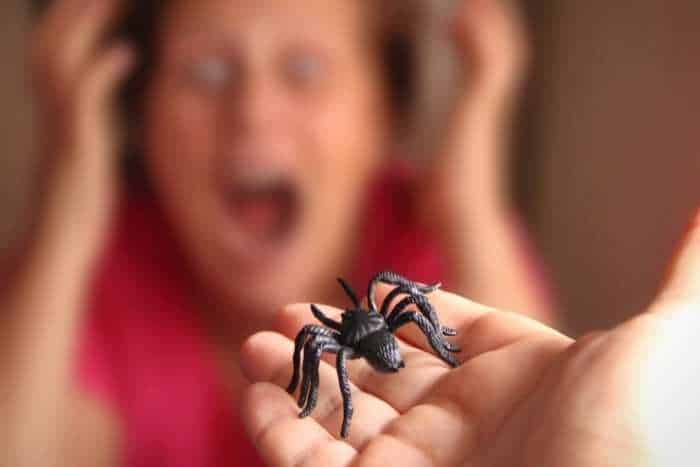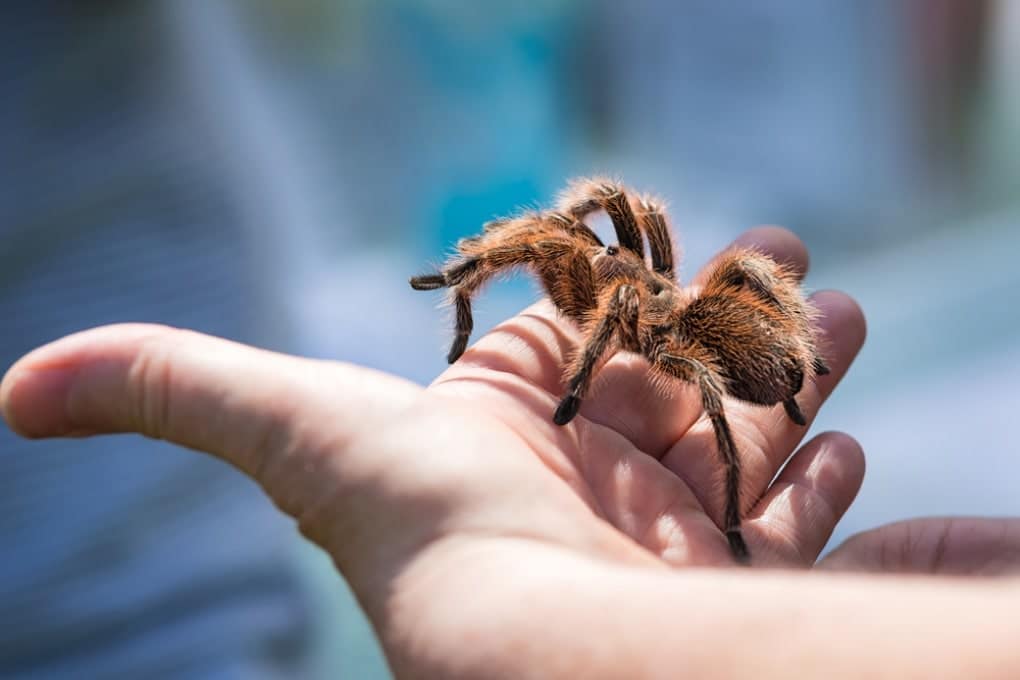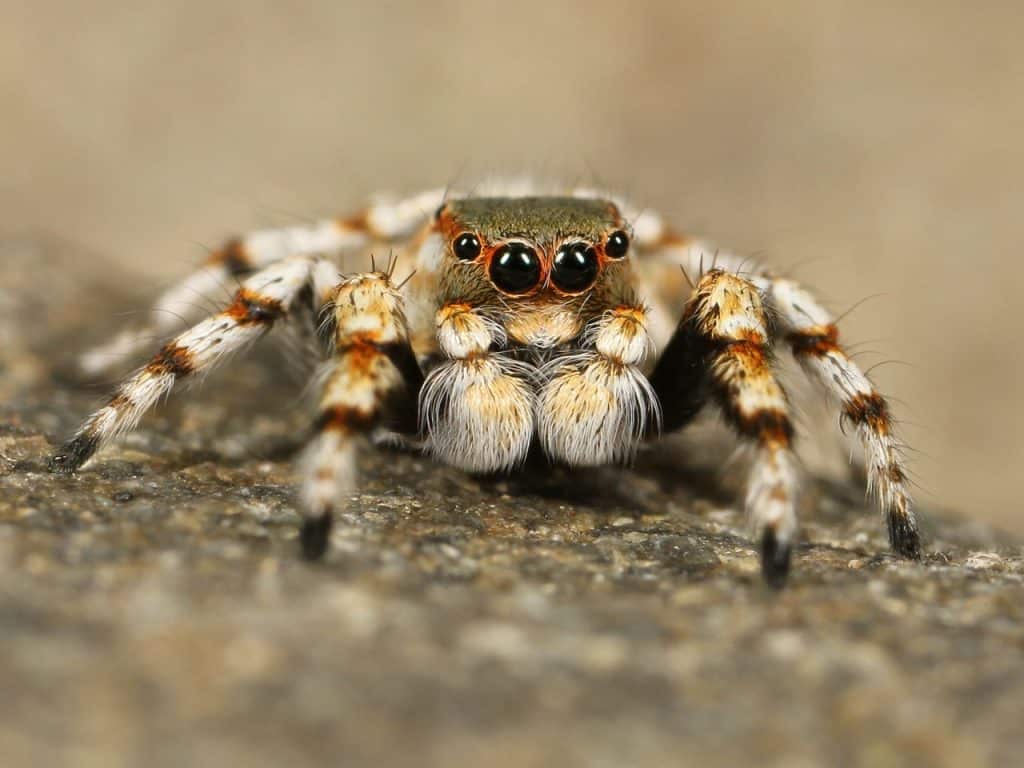It is estimated that the fear of spiders involves approximately 6% of the population who in fact suffer from arachnophobia full-blown, or an intense and irrational fear of arachnids.
Spiders rid your home of insects
So, if you are afraid of spiders and you happen to spot one, it might occur to you to eliminate it immediately and if you really can't, to call someone to do it for you.
The first reason is that we know that spiders feed on the insects that are unfortunate enough to get caught in their web, and having all of these buzzing around your house isn't exactly an appealing prospect.
According to IFL Science, our eight-legged friends and their habit of eating insects are a vital part of an ecosystem. Squishing a spider in your home might keep it from bothering you today, but be prepared for an influx of other insects because it's no longer around to eat them.

Spiders sometimes eat other spiders too, so you may end up with another one arriving pretty quickly after you squash the last one. Virtually every home is home to spiders and most of them prefer to keep their distance from humans, remaining hidden from sight most of the time and often running away if you encounter them: they are actually more afraid of you than you are of them and get rid of more annoying parasites.
Speaking of pests, some of the insects they catch and kill can also carry diseases with them, like mosquitoes. It's very rare for a spider to actually bite you, and while the vast majority of spiders are venomous, their venom is often too weak to have much of an impact on humans.
The types of spiders you really need to worry about are Black Widow and Recluse spiders and they are quite rare, so it will probably be very difficult to see them taking up residence in the rooms of your home. If you still want to get rid of it, then the classic method of placing a glass over it and sliding a piece of paper underneath would be ideal.
What is arachnophobia?
Arachnophobia is an intense fear of spiders. Many fears seem reasonable. We all try to avoid things that make us uncomfortable. The difference between fear and phobia is that a phobia is an intense, irrational fear of one or more things or situations. Furthermore, with phobias, the level of your fear does not correspond to the actual danger presented by the feared object or situation.
Phobias become a health problem when the fear interferes with the ability to carry out daily activities. Phobias can limit your ability to work effectively, put a strain on your relationships, and reduce your self-esteem. In this case, for example, you may purposely avoid outdoor activities (hiking, picnics, cycling) or seasonal activities (Halloween) with family or friends due to fear that spiders may be present.
Common triggers include:
•Sight of a spider (in person or in pictures).
•View of a spider web (in person or in pictures).
•Thoughts/previews about spiders or webs.
•Talking about spiders or cobwebs.
If you suffer from arachnophobia:
You feel anxious when seeing or thinking about a spider or cobwebs. Your anxiety gets worse the closer you get to the meeting. You have difficulty concentrating. You are consumed by their thoughts and these thoughts keep you up at night.

Arachnophobia is more common in females than males. Although anyone at any age can develop a specific phobia, such as arachnophobia, most develop during childhood and adolescence.
The symptoms of arachnophobia are similar to the symptoms of anxiety and panic attack. You might experience:
•Sweating or trembling.
•Tightness in the chest or rapid heartbeat.
•Difficulty breathing or breathing fast.
•Chills or hot flashes (red and hot face).
•A feeling of suffocation.
•Stomach ache or feeling of “butterflies” in the stomach.
•Dizziness, feeling faint or dizzy.
•Dry mouth.
•Crying, freezing, or clinging (symptoms of a specific phobia in children, although adults can also experience these symptoms).
If you suffer from arachnophobia, you can:
Avoid places or situations where you might encounter a spider or web or see images of one. Choose to stay where you feel most comfortable and refuse social activities or gatherings of family and friends because of your fear.
What causes arachnophobia is not fully understood. Researchers believe the causes could include:
A traumatic past experience with a spider.
Childhood exposure to a parent's arachnophobia. You may develop arachnophobia if you feel anxiety caused by one of your parents' reactions to spiders.
Family history of anxiety disorders. This could increase your chance of developing a phobia, such as arachnophobia.
Technically, scientists believe that neurochemicals overstimulate one area of the brain – the amygdala – in the presence of fear. It is also thought that a single genetic mutation can increase the risk of arachnophobia if you have that genetic defect.

If you suffer from arachnophobia, you know that you are afraid of spiders and you know that it is a problem because you are very careful to avoid situations where you might encounter a spider.
Your doctor will want to confirm that your fear is a phobia compared to a normal level of fear and that it is not the result of a medical condition or psychiatric disorder. Phobias significantly interfere with the ability to live a normal life.
Your provider may give you a questionnaire to fill out or ask you directly how your arachnophobia has affected your daily life, how intense your fear is, and how often you feel it. They may also ask you how you deal with the situation.
Your doctor will diagnose you with arachnophobia if you have all of the following:
•Your fear of spiders is intense and has been present for six months or more.
•Your fear or anxiety is about a specific situation or object, in this case spiders.
•Your fear and anxiety almost always sets in as soon as you encounter a spider or think about spiders.
•You avoid places where you think there are spiders or endure them with intense fear or anxiety.
•Your fear is out of proportion to the actual danger.
•Your fear causes you significant distress or significantly hinders your ability to be clear-headed.
Cognitive behavioral therapy (CBT) and exposure therapy are the two main treatments for arachnophobia.
Cognitive behavioral therapy (CBT): This type of psychotherapy (talk therapy) focuses on managing your phobia by changing the way you think, feel, and behave.
Exposure therapy (also called desensitization therapy): In this type of psychotherapy, you are gradually exposed to the feared situation. With gradual, repeated exposure, the goal is to make you feel comfortable facing the feared situation and, in this case, recognize that spiders are not dangerous (unless you live in parts of the country known for spiders dangerous).
Exposure therapy can be stimulated in several ways. The therapy also includes relaxation and breathing exercises. Your psychologist will develop a plan unique to you, based on the severity of your symptoms.
CBT and exposure therapy are often used together in a single treatment plan. CBT helps you better understand your fears, then exposure therapy helps desensitize your body's “fight or flight” response to spiders.

Medications do not treat arachnophobia, but are sometimes prescribed, for a short period of time, to treat anxiety caused by fear of spiders. Medication, if used, is usually part of the total psychotherapeutic treatment plan. If your doctor believes you need medication, the classes of medications most often prescribed are:
Benzodiazepines, such as the anti-anxiety drugs alprazolam (Xanax®), clonazepam (Klonopin®), and diazepam (Valium®).
Selective serotonin reuptake inhibitors, such as the antidepressants paroxetine (Paxil®) or escitalopram (Lexapro®).
Other treatment options may include sedatives, tranquilizers, and beta blockers.
In addition to consulting your primary care doctor or a psychologist, you can try one of the following solutions that make you feel comfortable:
Learn strategies for relaxing: try deep breathing exercises (inhale slowly and deeply through your nose, hold for three seconds, exhale slowly through your mouth), meditation, mindfulness, progressive muscle relaxation (tensing and relaxing muscle groups), and others methods for relaxation. Visualize and focus your attention on something that calms you.

Take care of yourself: Eat a balanced diet, follow good sleep habits and exercise for 30 minutes at least five days a week. Healthy lifestyle choices can reduce anxiety.
Join a support group for people with phobias: Support groups can be very helpful to know that you are not alone and to share tips and advice.
Without treatment, a phobia can last a lifetime and can isolate you from people and social activities.
Fortunately, phobias are easily treatable. Psychotherapy, especially exposure therapy, helps up to 90% of people who commit to practicing learned therapy. You may notice improvements within a few weeks or months.
It can be comforting to know that many people have phobias. Your doctor is ready to help you. The good news is that arachnophobia is a treatable condition. With treatment and a commitment to practicing the techniques you learn in therapy, you can learn to manage your fear of spiders and enjoy life.
#Here39s #shouldn39t #kill #spiders #find #home
